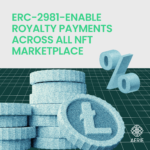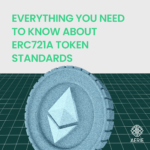Blockchain Strategy Implementation with Vodafone’s David Palmer

Join us on the Hatched Series as we delve into a thought-provoking conversation with David Palmer, the visionary behind Vodafone’s Digital Asset Broker (DAB) initiative. Our hosts, Glycel and Aman, engaged with David to unravel how he discovered the technology’s potential and how it can revolutionize various industries, including telecommunications. Throughout the conversation, David provides valuable insights into bridging the gap between traditional companies and the blockchain space, the importance of use cases, and the future of Web3.
From Skepticism to Revolution
David begins by recalling with vivid clarity the day that set it all in motion. “I remember it like it was yesterday,” David begins, his voice tinged with a mix of nostalgia and excitement. “I was in the car with a friend, and he was raving about mining Bitcoin. He was so convinced that cryptocurrencies were the future. Honestly, I thought he was going crazy.”
But skepticism soon turned to fascination. David’s curiosity led him to dig deeper into the world of blockchain and cryptocurrencies. He discovered the concept of cryptographically secured tokens and money, which piqued his interest. However, it was Ethereum that truly captivated him and sparked his enthusiasm for the technology.
“The whole concept of smart contracts blew my mind. Because what I could see from a business perspective is trust and automation. That has the ability to completely enhance the whole customer experience”
He elaborates on the potential of blockchain technology to revolutionize trust-based transactions. He envisions a world where all credentials are inherently trusted, and smart contracts on a blockchain play a pivotal role in this transformation.
David’s enthusiasm for blockchain goes beyond theory; he actively immersed himself in the field, even experimenting with Solidity programming. His background in the Internet of Things (IoT) provided a natural synergy with blockchain, as IoT devices like connected cars, drones, and sensors require trust, credential authentication, and seamless transactions — areas where blockchain technology excels.
Establishing a Web3 Department at Vodafone
Aman’s curiosity about integrating blockchain and Web3 into a corporate giant like Vodafone sparked an animated response from David. He expressed enthusiasm for the structured approach that Vodafone embraced when it came to these innovations. The company was presented four blockchain use cases, and their commitment to innovation led to the approval of all these projects.
David’s storytelling took a reflective turn as he recalled a pivotal piece of advice from Johan Wibergh, Vodafone’s then CTO.
“I remember literally chasing Johan down, laptop in hand, pitching blockchain. But Johan offered a game-changing perspective. He said, ‘David, the technology is really interesting. But people don’t talk about the database. People talk about the use case that come from the business angle.’ I never forgot it. And in fact, that’s what we did.”
Acting on this advice, David and his team focused on the tangible business impact of their Web3 initiative, the Digital Asset Broker. David highlighted the unique approach Vodafone took compared to their peers, concentrating on the project’s business dimensions rather than getting caught up in the intricacies of the protocol.
Vodafone’s endeavors extend beyond the mere integration of Web3, blockchain, and FinTech with IoT. Instead, their main objective revolves around creating solutions that provide concrete business value. This principle serves as the foundation of their strategy as they navigate the future landscape of Web3.
The Challenges of Onboarding
“By 2030, we’re expecting 5.6 billion people to have a digital wallet. If you look at the current number of crypto wallets, it’s 330 million. Why hasn’t Web3 seen mass adoption?”
The delay in enterprise implementations, David explained, can be attributed to practical considerations. He pointed out that the key lies in achieving interoperability between phones, IoT devices, and fintech wallets, enabling them to interact and sign on-chain. This transition has the potential to elevate the number of blockchain participants from a mere 320 million to billions, ultimately solidifying blockchain as an integral component of the digital infrastructure.
He painted a vivid picture of the future, where a new digital infrastructure integrating AI, the Metaverse, Web3, fintech, and telco technologies is emerging. He emphasized the importance of these elements working together seamlessly for this vision to become a reality. In response, Aman raised a critical question about how Vodafone addresses the challenges of education and onboarding in this rapidly evolving space.
David leaned in, “Most of us in this business are techies. We’re fascinated by the protocols, by consensus algorithms, by the technical nuances of smart contracts. But people aren’t.”
“People actually want a simple solution that has clear value add to them, or their business.”
Palmer pointed out that one of the shortcomings of Web3 has been the complexity of user interfaces and user experiences, making it challenging for non-technical users to engage with blockchain applications.
Drawing a parallel with Apple’s approach, which simplified complex technologies, he suggested that the convergence of various technologies could help bridge this gap. Palmer envisioned a future where Web3 doesn’t operate in isolation but collaborates with Web2 and telecom operators. He stressed the need for trust as a service and highlighted the potential of integrating Web3 platforms with Web2, utilizing the metaverse as a new interaction point, and embedding it within social media platforms and fintech solutions.
David’s Blueprint for Blockchain Integration
In Glycel’s query about the strategies at DAB for implementing blockchain, David touched on the early challenges they faced. The GDPR compliance and the limitations of the blockchain protocols initially posed significant barriers. They also grappled with performance issues and the need for blockchain to coexist with existing legacy systems.
David emphasized a step-by-step approach, focusing first on external applications of blockchain, particularly where it added clear value, such as in IoT. This approach allowed for early successes and gradual expansion into other sectors like automotive and healthcare.
David also shared his vision for the future of blockchain, noting the progress made at both layer one and layer two levels to overcome initial limitations and provide more efficient and scalable solutions. He anticipates a transition toward public blockchains becoming integral to common infrastructure, complemented by layer two innovations. Emphasizing the significance of convergence, David offered guidance to aspiring crypto entrepreneurs, urging them to incorporate business acumen into their ventures, emphasizing the importance of a well-defined use case and market understanding in building successful platforms.
“You’ve got to remember: big organizations have spent billions on their legacy systems and their ERP systems. They’re not going anywhere fast. So blockchain needs to coexist with these technologies, at least in the short to medium term.”
To close our episode, David noted the cyclical nature of crypto’s popularity in relation to its market value. He observed that interest and support within large organizations like Vodafone often fluctuate with the crypto market trends. Despite this, he remains optimistic about the future of blockchain and Web3, foreseeing their continued growth and significant impact on various industries.









